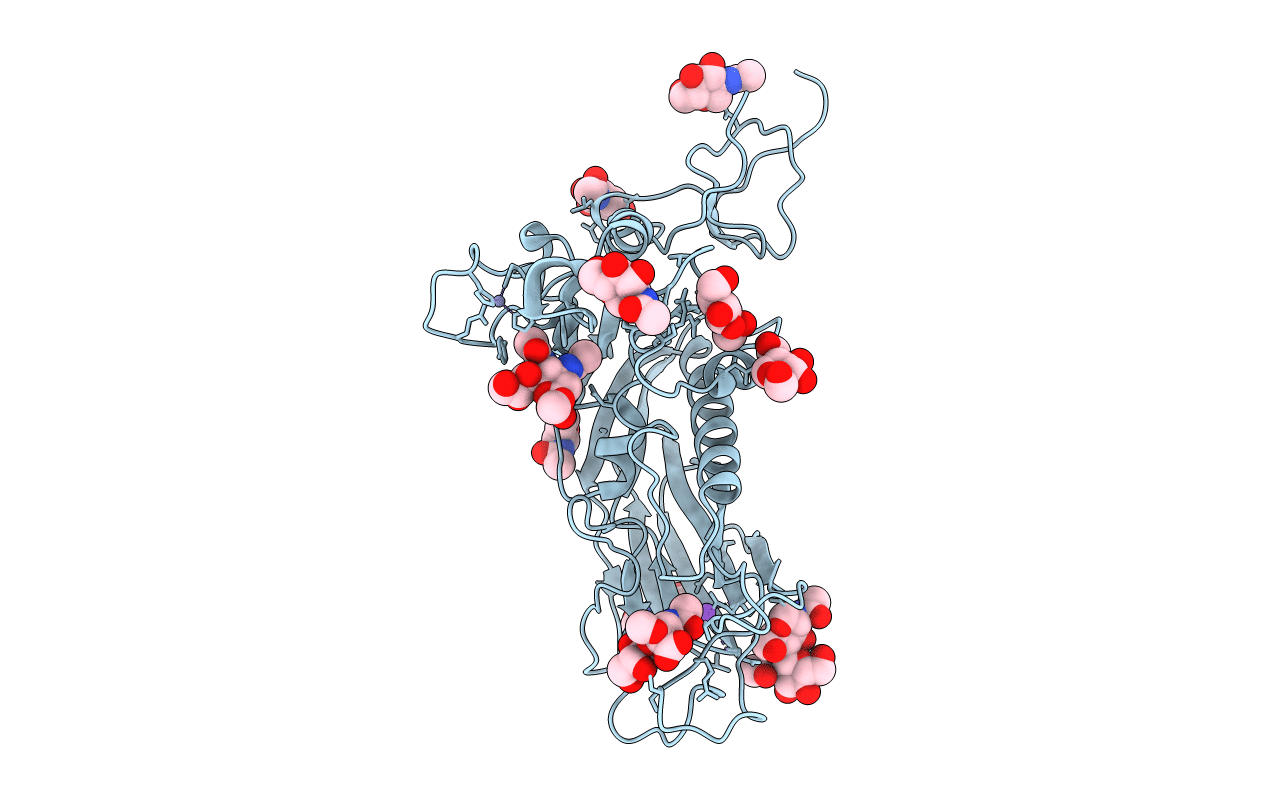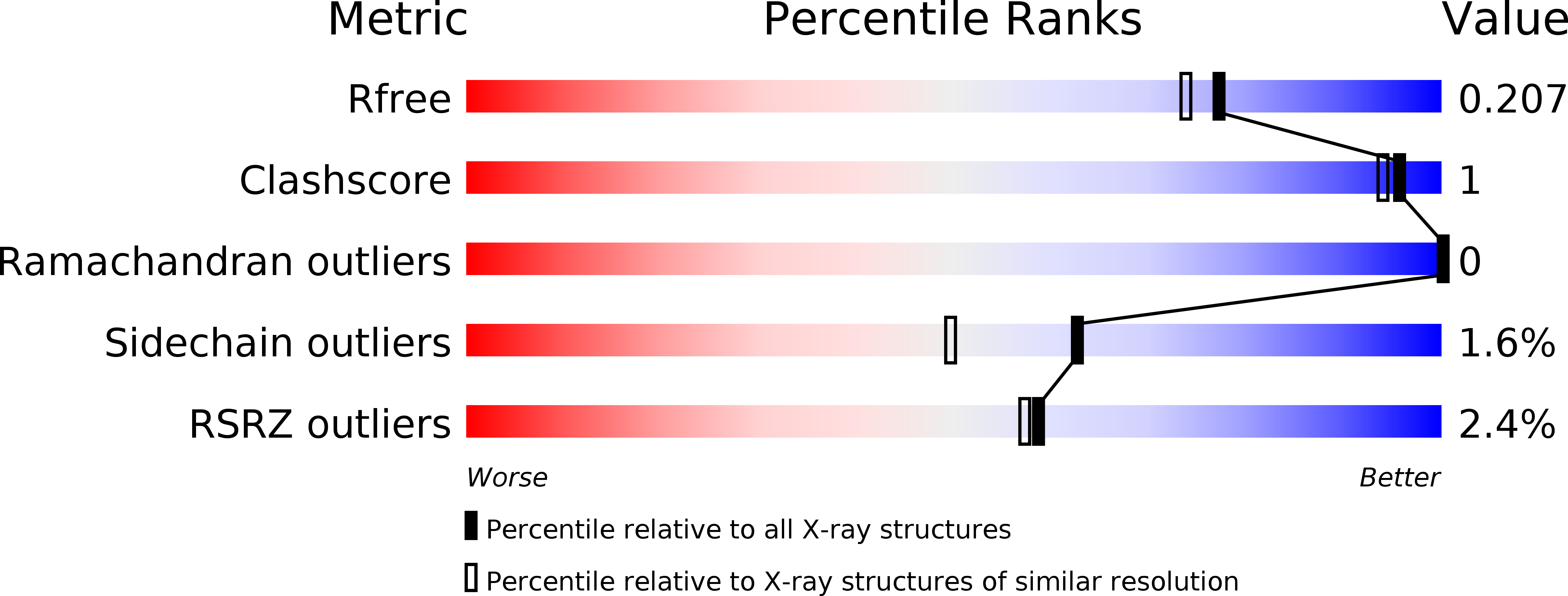
Deposition Date
2016-04-22
Release Date
2016-05-11
Last Version Date
2024-10-16
Entry Detail
PDB ID:
5JIL
Keywords:
Title:
Crystal structure of rat coronavirus strain New-Jersey Hemagglutinin-Esterase in complex with 4N-acetyl sialic acid
Biological Source:
Source Organism:
Rat coronavirus (Taxon ID: 31632)
Host Organism:
Method Details:
Experimental Method:
Resolution:
1.85 Å
R-Value Free:
0.20
R-Value Work:
0.18
R-Value Observed:
0.18
Space Group:
C 2 2 21


